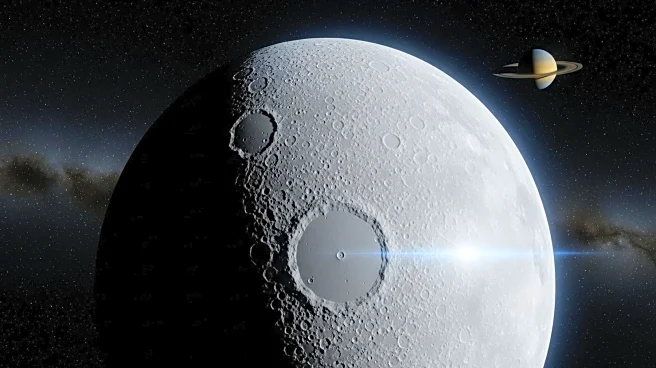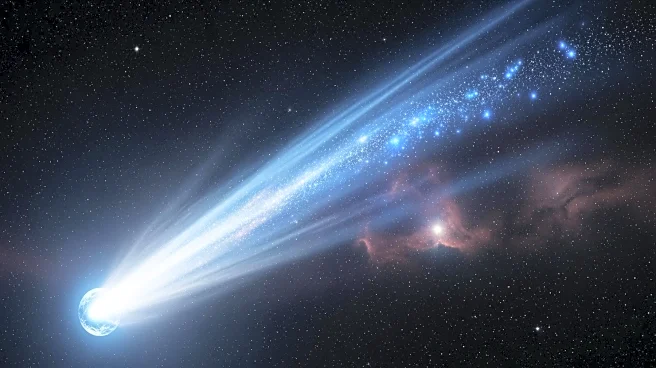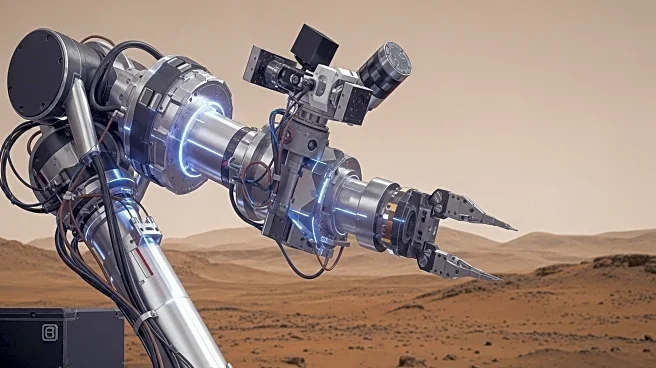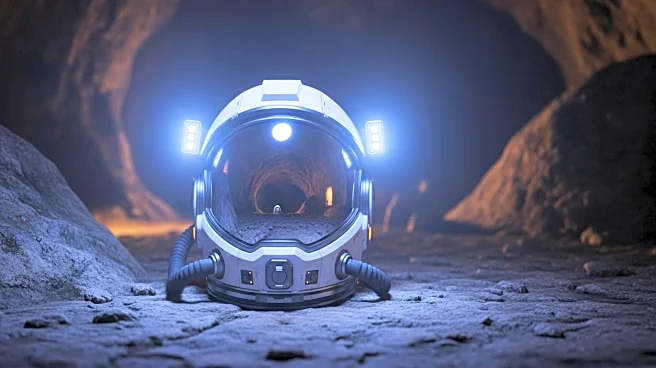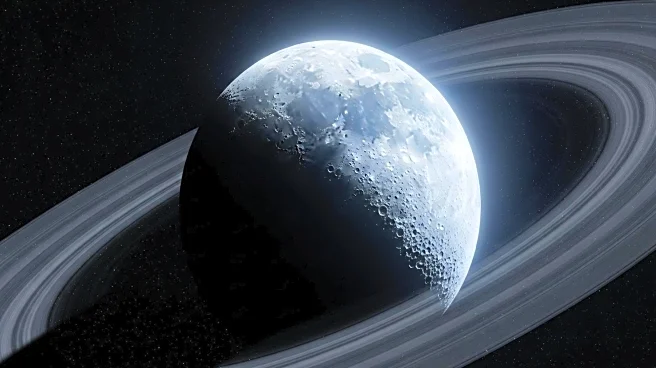What's Happening?
Researchers from Chalmers University of Technology and NASA have discovered a chemical anomaly on Saturn's moon Titan that challenges established chemistry rules. In Titan's extremely cold environment, polar and nonpolar substances, which typically do
not mix, are able to combine. This finding expands the understanding of chemical processes that may have existed before life appeared on Earth. Titan's surface and atmosphere, rich in nitrogen and methane, resemble early Earth conditions, offering insights into the origins of life. The study, published in PNAS, reveals that methane, ethane, and hydrogen cyanide can interact in ways previously thought impossible, forming stable co-crystals. This discovery could impact the understanding of Titan's geology and its landscapes, as well as contribute to the study of prebiotic chemistry.
Why It's Important?
The discovery on Titan is significant as it challenges one of chemistry's fundamental principles, potentially altering the understanding of chemical interactions in extreme environments. This could have implications for the study of prebiotic chemistry, which is crucial for understanding the origins of life. The ability of polar and nonpolar substances to mix under Titan's conditions suggests new pathways for chemical reactions that could lead to the formation of life's building blocks, such as amino acids and nucleobases. This research not only enhances knowledge about Titan but also provides insights into similar processes that might occur in other cold environments in space, potentially influencing future space exploration and the search for extraterrestrial life.
What's Next?
NASA's Dragonfly space probe is expected to reach Titan in 2034 to further investigate its surface and prebiotic chemistry. Until then, researchers plan to continue exploring hydrogen cyanide chemistry, potentially in collaboration with NASA. This ongoing research may reveal more about the interactions between polar and nonpolar substances and their role in the chemistry preceding the emergence of life. The findings could also help understand similar processes in other cold environments in space, expanding the boundaries of chemistry and contributing to the search for life beyond Earth.
Beyond the Headlines
The discovery on Titan highlights the potential for unexpected chemical interactions in extreme environments, challenging established scientific principles. This could lead to a reevaluation of chemical processes in other parts of the universe, influencing the search for life and the study of planetary atmospheres. The collaboration between Chalmers University and NASA exemplifies the importance of international cooperation in advancing scientific knowledge and exploring the unknown.






